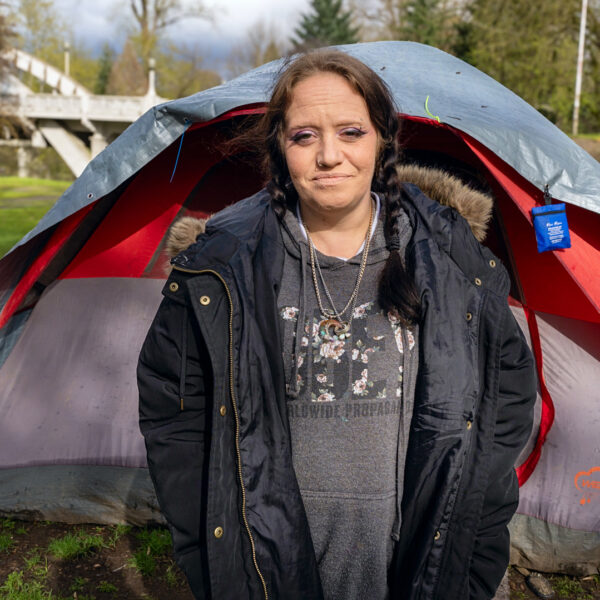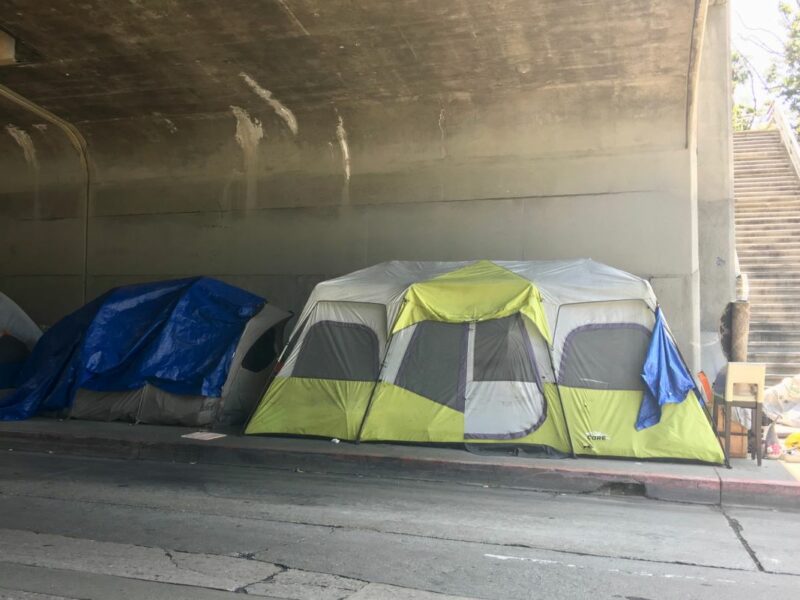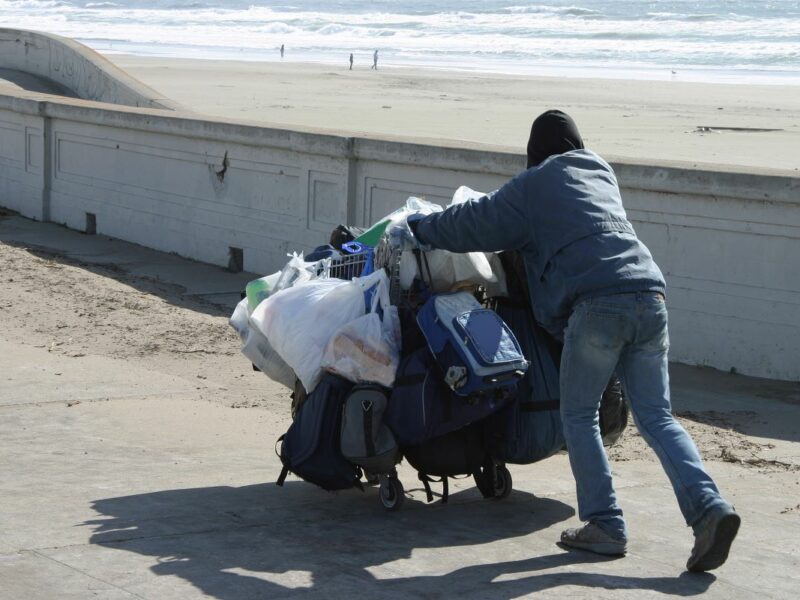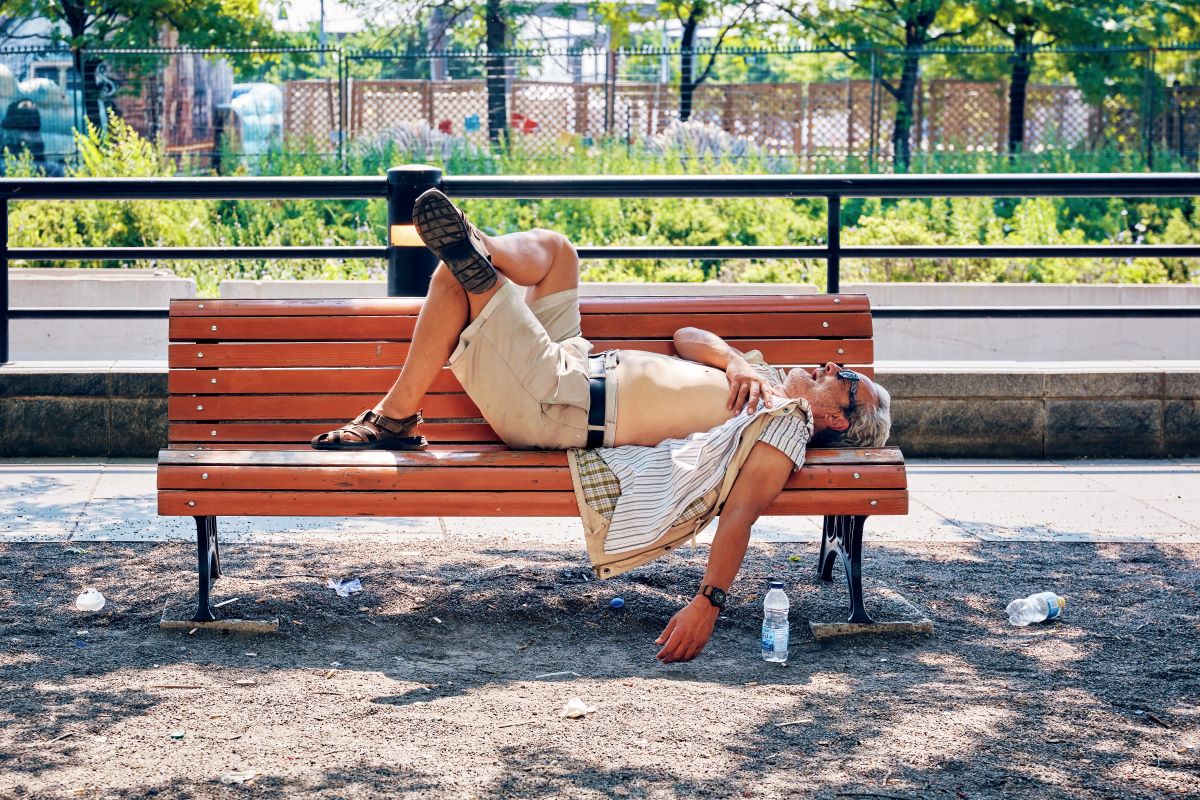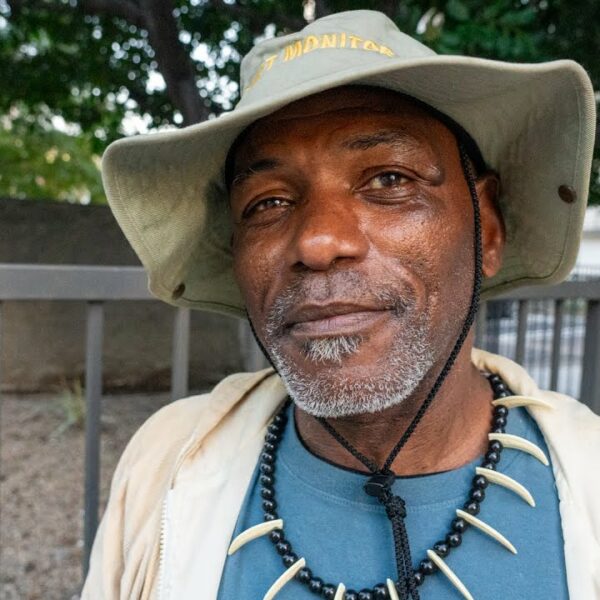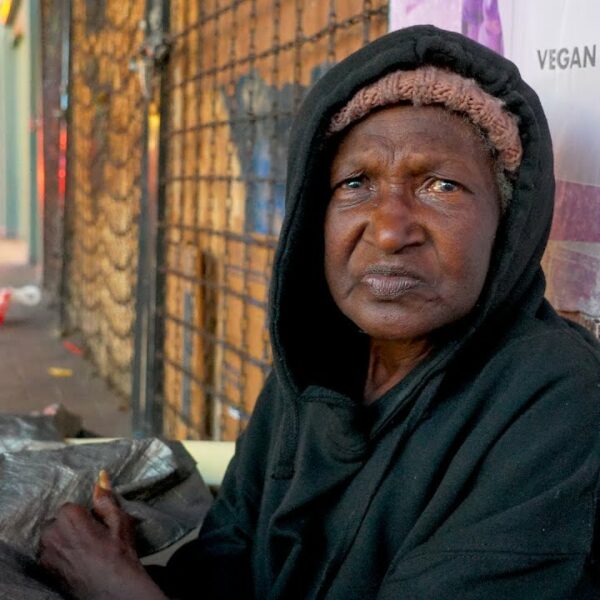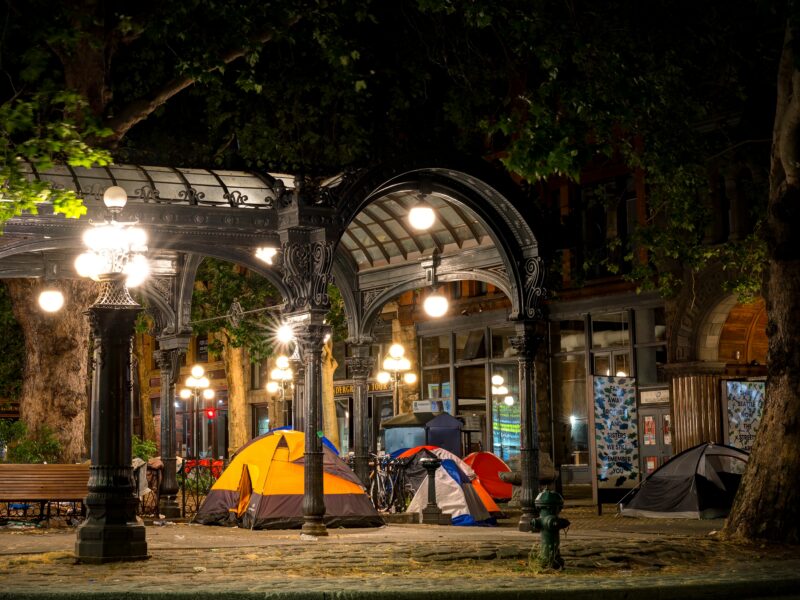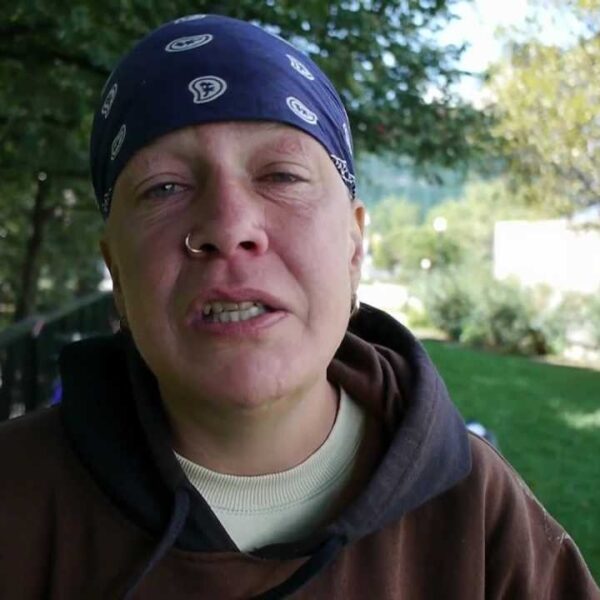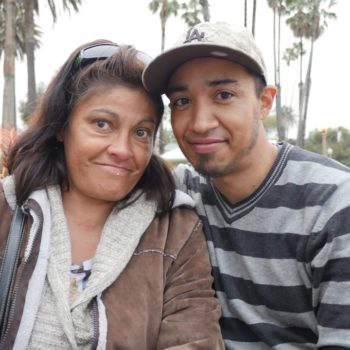Urban areas where Canada’s homeless population is generally concentrated are heating up due to urban architecture and climate change. The intense heat poses a significant risk to members of the country’s homeless population. Here’s what you need to know.
The Current Situation: A Dark Truth Harbored Beneath a Hot Sun
Picture the following scenario. It is late June 2021 in Lytton, B.C., where temperatures have reached record-breaking highs. Local thermometers have been stuck at 49.6 degrees Celsius for three straight days. This is a full 4 degrees hotter than it has ever been in the region.
Heat permeates the pavement causing wildfires and unanticipated deaths. Like the temperature, the homeless population is also on the rise due to climate-change-induced natural disasters and an affordability crisis. This vulnerable population scrambles to find refuge in fountains that have been turned off and restrooms that have been shuttered.
While an isolated incident at this moment, experts project it represents what’s in store for the future. More homelessness. More heatwaves. Fewer services. Less hope. This dark truth hides beneath a hot sun, a rising hazard over the distant but visible horizon.
Things Are Heating Up in Urban Spaces. Here’s Why.
Architectural development did not leave much room for the possibility of extreme heat. The urban landscape is designed to accommodate tall buildings and commercial spaces. Heat is commonly trapped between these looming structures, creating a hot pocket for the people navigating the sidewalks below.
In addition to this funnel of unfathomably high temperatures, there’s also the heat that the city itself creates. Meanwhile, automotive transmissions filter through the atmosphere, and furnaces and air conditioning units churn.
Climate Atlas of Canada projects that under the current rate of climate change, a phenomenon known as the urban heat island effect will hit places like Quebec, British Columbia, and Vancouver hard. The urban heat island effect results from urban architecture trapping heat much faster than any natural landscape.
As towering buildings meet the corners of city sidewalks, city surfaces generate temperatures 27-50° Celsius hotter than the air. Each barricaded sidewalk is akin to an island, sweltering with trapped heat on every side. Even at night, summer sidewalks pose the danger of fostering hot environments. This poses a unique and unseen threat to the 235,000-plus people experiencing homelessness in Canada, many of whom are located in high-traffic urban areas.
Hot Days and Long Nights Ahead
As climate change continues leaving its erosive mark on the planet, Canada can only hold out for hotter days and longer nights ahead. Experts are bracing for longer, more frequent heatwaves this summer and in the future.
Unsheltered individuals are unlikely to find solace after the sun dips below the horizon. One of the most devastating consequences of the urban heat island effect is that surfaces hold the heat long after the sun has set. Under current conditions, Canadian cities are estimated to be 12° Celsius hotter than surrounding rural and suburban regions. And their surfaces are even more sweltering. It is a potentially fatal threat for our neighbors experiencing unsheltered homelessness.
Most Homeless People in Canada are Confined to the Unbearably Hot Conditions of City Streets
According to Capital Current, most people experiencing homelessness are confined to these sweltering urban settings. In the wake of the international pandemic, life in the heat has progressively grown worse. Access to public fountains and restrooms is limited or, in some cases, completely non-existent.
A Hamilton-bred homeless advocate by the name of Dana described the state of delirium that can come on suddenly for people who cannot find refuge indoors:
“It’s kind of like you get schizophrenia from the sun — you’re up for days without realizing you’re awake for days,” she said.
Homeless People Risk Life and Limb in Heatwaves they are Often Unaware Are Coming
According to PBS News Hour, rates of extreme heat exposure have tripled all across the globe due to climate change and increased homelessness. One cited study found that people experiencing homelessness are now 200 times more likely to die from complications related to extreme heat.
A study entitled “Climate Change, Weather, Housing Precarity, and Homelessness: A Systematic Review of Reviews” showed that vulnerably housed people are disproportionately exposed to extreme weather events because they tend to miss out on important alerts.
Here we have a marginalized group of people who are already more likely to die prematurely being exposed to exceedingly hot temperatures and confined to overheated city sidewalks, all the while missing out on warnings of coming heatwaves. Those heatwaves are believed to grow stronger and more frequent in the near future, as is the ever-burgeoning state of homelessness.
Ask Your Representatives About Their Thoughts on the Homeless Crisis
One more hot summer with neighbors unhoused is another missed opportunity that could cost countless lives. Please contact your representatives and ask what they are doing to make housing a human right that is safe, affordable, and accessible.




